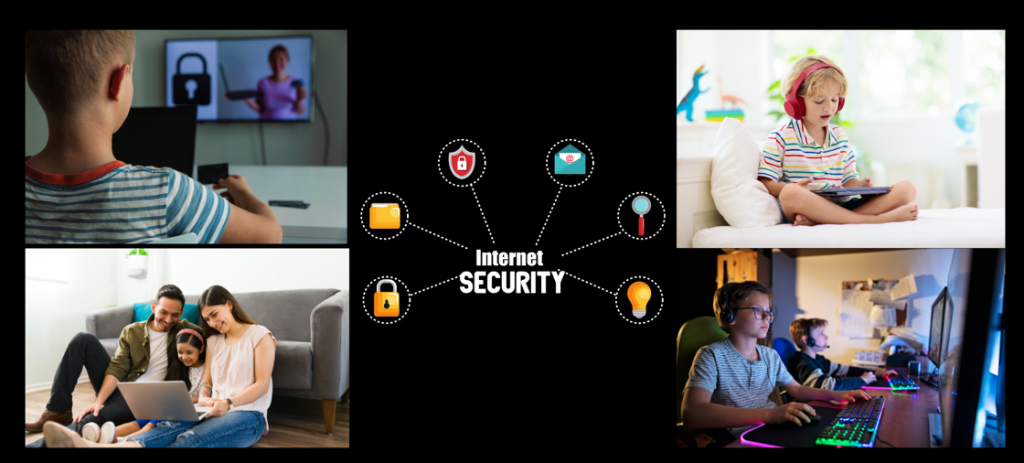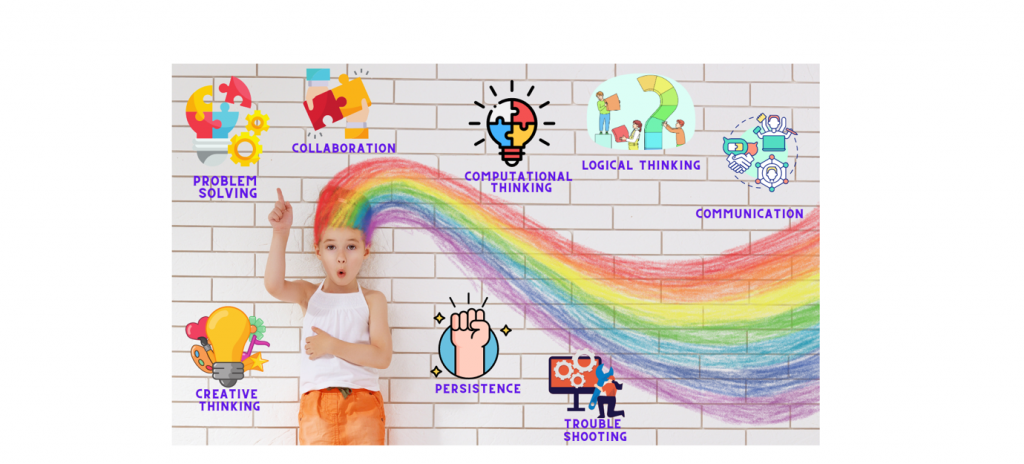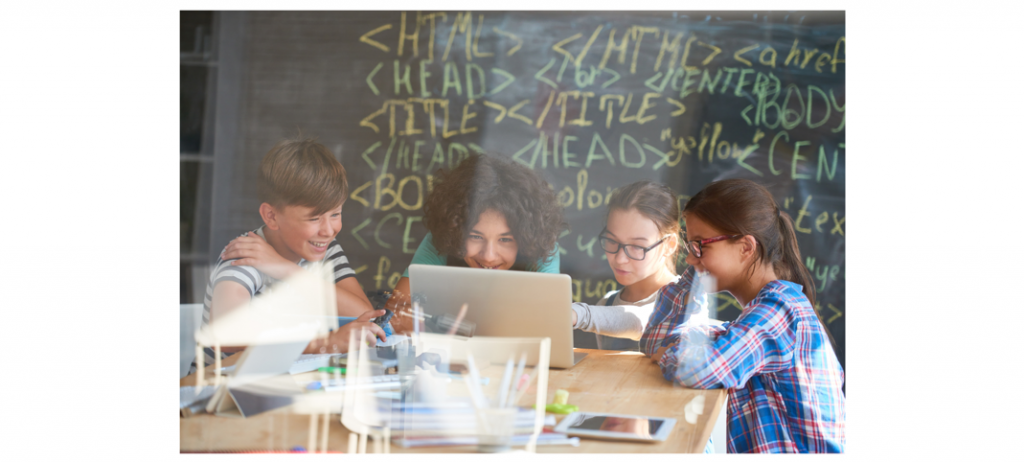In the vibrant world of coding, where imagination meets innovation, here is a heartfelt blog tailored for parents seeking to empower their children on a transformative path of creativity and inclusion. In today’s digital landscape, coding skills are becoming ever more indispensable, shaping the future of our world.
This blog is not just about teaching technical prowess; it is a celebration of diversity, promoting an atmosphere where every young mind can find its place, regardless of gender, race, ability, or background. Join us on this inspiring journey as we equip parents with the tools to nurture their children’s coding talents and encourage them to embrace the rich tapestry of ideas, perspectives, and possibilities that flourish within the colorful realm of code.
The Joy of Learning Together
We understand that the world is constantly evolving, and so are the opportunities and challenges our children will face. It is our responsibility to ensure that our children grow up in a world where diversity is celebrated, stereotypes are challenged, and inclusivity is embraced.
- Embracing Diversity in Coding: In today’s digital age, coding has emerged as an essential skill that opens doors to endless possibilities. We firmly believe that embracing diversity in coding and promoting inclusivity is not just a matter of choice but a responsibility for us as parents.
- Understanding the Importance of Inclusivity: Inclusivity in coding means welcoming individuals of all backgrounds, ethnicities, genders, and abilities into the world of programming. This enriching environment fosters creativity and innovation, as people from diverse backgrounds bring unique insights to the table.
- Breaking Stereotypes: Historically, coding has been viewed as a male-dominated field, perpetuating harmful stereotypes that discourage girls from pursuing programming. As parents, we play a pivotal role in breaking these stereotypes and promoting gender equality in coding. By providing equal opportunities and resources to all children, we create a more inclusive and balanced tech industry for the future.
- Cultivating an Inclusive Mindset: Coding communities can sometimes be competitive and exclusionary, but we can guide our children in cultivating an inclusive mindset that values empathy and respect. By nurturing this mindset, our children will become better coders and individuals who contribute positively to society.
Embracing diversity in coding and fostering inclusivity is not only about preparing them for a career but also about raising compassionate, empathetic, and open-minded individuals who can make a positive impact on the world.
Exploring Diverse Programming Languages
One way to provide children with a well-rounded and enriching learning experience is by encouraging them to explore diverse programming languages.
- Introduction to Block-Based Coding Languages: Block-based coding languages offer a bridge between the simplicity of Scratch (which serves as an excellent introductory platform) and the complexities of text-based languages. These intuitive platforms, like Blockly or Tynker, allow kids to create code by arranging visual blocks, making coding more accessible and enjoyable. Our children develop problem-solving skills and logical thinking through these languages while creating fun and interactive projects.
- Introducing Text-Based Coding Languages: As our children grow in their coding journey, we introduce them to text-based languages like Python, JavaScript, and others. These languages provide a deeper understanding of programming concepts and enable them to build real-world applications.
Most importantly, this exposure fosters a love for learning, curiosity, and creativity, inspiring them to continue exploring the vast and ever-evolving world of coding.
Creating Safe and Supportive Coding Spaces
As parents, our primary concern is providing a safe and nurturing environment for our children to explore their interests and passions, including coding.

Let us delve into the crucial aspects of creating safe and supportive coding spaces for our kids, both online and offline.
- Ensuring Online Safety: In today’s digital world, online safety is of utmost importance. It is important to take proactive measures to protect our children while they engage in coding activities on the internet. Guide them on responsible internet usage, emphasizing the importance of safeguarding personal information and avoiding interactions with strangers online. To create a secure digital space, there are reputable coding platforms and communities that prioritize the safety of their young users.
- Recognizing and Addressing Cyberbullying and Online Harassment: In a connected world, cyberbullying and online harassment are potential risks that we must address head-on. Educate children about these issues and encourage open communication, ensuring they feel comfortable discussing any negative experiences they encounter online.
Through these efforts, we aim to create a safe and supportive environment where our children can thrive in their coding journey.
Nurturing Creativity and Problem-Solving Skills
As parents, we recognize the immense value of nurturing our children’s creativity and problem-solving abilities.

Let us explore how coding can be a powerful tool in fostering these essential skills.
- Encouraging Art and Animation in Coding Projects: Whether it’s designing unique characters, creating interactive stories, or developing visually appealing games, coding allows young ones to unleash their imagination and turn their ideas into reality.
- Thinking Outside the Box: Solving puzzles, debugging code, and tackling complex algorithms foster critical thinking and resilience in the face of obstacles. Celebrate their perseverance and provide guidance when needed, allowing them to learn from their mistakes and grow as problem solvers.
- Demonstrating the Impact of Coding in Everyday Life: By introducing them to coding projects with tangible outcomes, such as building a simple website or creating a basic app, we ignite their curiosity about the endless possibilities that coding offers.
By encouraging artistic expression, embracing challenges, and showcasing real-world applications, support your children in becoming well-rounded individuals with the ability to tackle complex problems and contribute to a brighter future.
Empowering Children with Disabilities in the World of Coding
Inclusivity in coding education ensures that every child, regardless of their abilities, can explore the world of technology and contribute to innovative solutions.

Here are few strategies for making programming accessible, utilizing assistive technologies, and celebrating success stories to inspire kids with disabilities in the tech realm.
- Coding for All: When it comes to teaching coding to children with disabilities, customization and flexibility are key. Here are some ways to ensure that coding education is inclusive:
- Adaptive Curriculum: Develop coding curricula that accommodate various learning styles and abilities. Incorporate visual, auditory, and tactile elements to engage children with diverse needs.
- Sensory-Friendly Approach: Create a sensory-friendly environment by considering factors such as lighting, noise, and comfort. This enables children with sensory sensitivities to learn and code comfortably.
- Multimodal Learning: Offer a variety of ways for children to learn and express their ideas. Incorporate visual programming, interactive games, and storytelling techniques to cater to different communication and learning preferences.
- Assistive Technologies: Assistive technologies play a pivotal role in breaking down barriers and providing children with disabilities the tools they need to engage in coding:
- Screen Readers and Text-to-Speech: These technologies assist children with visual impairments by converting text and code into speech, allowing them to navigate and understand the coding environment.
- Switch Devices: Children with motor impairments can benefit from switch devices that enable them to interact with technology using adaptive switches or buttons.
- Accessible Coding Platforms: Choose coding platforms that adhere to web accessibility standards, ensuring that children with disabilities can use screen readers and keyboard shortcuts seamlessly.
- Celebrating Success Stories: Inspiring kids with disabilities in tech highlighting success stories of individuals with disabilities who have excelled in the tech industry can inspire young minds and provide role models:
- Personal Stories: Share stories of individuals who have overcome challenges and achieved success in the coding and tech fields despite their disabilities. These stories can instil hope and motivation.
- Guest Speakers and Workshops: Organize workshops and invite guest speakers with disabilities to share their experiences. These interactions provide children with real-world examples of what’s possible.
- Showcasing Projects: Create opportunities for children with disabilities to showcase their coding projects. Celebrating their achievements not only boosts their confidence but also encourages others to embark on similar journeys.
By adopting strategies like accessible curriculum design, leveraging assistive technologies, and showcasing success stories, we can ensure that every child has the opportunity to explore their potential, develop valuable skills, and contribute to the ever-evolving world of technology.
Related reading
Making Coding a Joyful Journey
Coding, often perceived as a complex and daunting task, can be transformed into an enjoyable and exciting experience through creative approaches that emphasize engagement and playfulness.
Here are few strategies to make coding a source of delight and engagement for learners

- Gamifying Coding: Gamification involves incorporating game-like elements into learning experiences, making coding more accessible and engaging:
- Challenges and Rewards: Set up coding challenges of increasing difficulty, rewarding learners with points, badges, or virtual rewards as they progress. This sense of achievement motivates learners to tackle complex concepts.
- Storytelling: Frame coding tasks within a narrative or storyline, creating a sense of purpose and immersion. Learners can become “code adventurers” solving problems and completing quests.
- Interactive Coding Games: Develop or utilize coding games that encourage learners to apply programming concepts while solving puzzles or completing levels. These games provide immediate feedback and promote active learning.
- Organizing Coding Competitions and Hackathons: Coding competitions and hackathons provide opportunities for learners to showcase their skills and collaborate with peers:
- Friendly Challenges: Organize coding competitions where learners can solve problems individually or in teams. The competitive spirit encourages learners to improve their coding skills while having fun.
- Hackathons: Host hackathons focused on specific themes or challenges. Encourage participants to brainstorm, design, and code solutions within a limited timeframe, fostering creativity and teamwork.
- Showcase Events: Celebrate the achievements of participants by organizing showcase events where they can present their projects and receive recognition. This bolsters their confidence and fosters a sense of accomplishment.
- Exploring Real-World Projects: Connecting coding to real-world projects gives learners a sense of purpose and the opportunity to solve relevant problems:
- Passion Projects: Encourage learners to choose projects aligned with their interests, whether it’s building a website, creating a game, or developing a mobile app. This autonomy increases motivation and engagement.
- Community Engagement: Collaborate with local organizations or causes to create coding projects that address real community needs. Solving practical problems with coding fosters a sense of responsibility and accomplishment.
- Cross-Disciplinary Projects: Integrate coding with other subjects such as science, art, or literature. This approach showcases the versatility of coding and its application in various fields.
Such approaches not only make coding accessible to learners of all ages but also cultivate a passion for problem-solving, creativity, and innovation that will serve them well in the ever-evolving digital landscape.
SkoolOfCode: Unleashing Kids’ Potential in Coding
SkoolOfCode, a leading online coding school for kids, is a transformative learning hub dedicated to nurturing young coding enthusiasts. With customized pathways, interactive lessons, and skilled mentors, SkoolOfCode propels children into the world of coding with confidence. Its inclusive environment, offering a variety of coding languages and real-world projects, ensures that all child’s unique talents are harnessed.
Through coding challenges, friendly competitions, and celebratory showcases, SkoolOfCode empowers kids to unleash their creativity, problem-solving skills, and tech leadership potential. With SkoolOfCode, young minds not only learn to code but also embark on an exciting journey of growth, innovation, and endless possibilities.
Conclusion
In the realm of coding, diversity paints a vibrant picture of potential. By embracing inclusivity, nurturing creativity, and celebrating individuality, we empower young coders to shape a colorful and innovative digital landscape. Let’s continue fostering an environment where every child’s journey is valued, and where coding becomes a joyful, collaborative, and limitless adventure. Together, we weave a tapestry of brilliance, where diverse threads create a harmonious and dynamic future in technology.
🚀 Ready to Code? Book a Trial Class with SkoolOfCode!
Embark on a coding journey like no other. Experience interactive learning, expert guidance, and creative fun. Don’t miss out, book your trial class now! 🔍🎉
Ms.Manpreet Virk, an educator at SkoolOfCode with a degree in M.Phil and Master in Computer Science. She is passionate about learning and teaching young minds.

